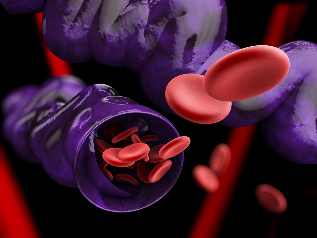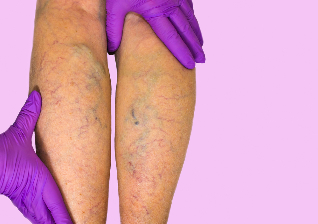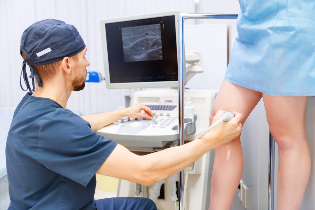Varicose disease of the lower extremities arises from several reasons, which can be classified into 3 groups: disorders of blood clotting, the failure of the walls of the container, the sluggish changes of the surrounding tissues. The etiological factor of influence on the treatment, but medical drugs are not able to narrow the dilated section of the vein.

Remedies for the veins support blood vessel tone, but is not able to restore the functional failure of the valves, leading to stagnation.
Varicose disease: causes
When increasing the coagulation of the blood created the conditions for the formation of blood clots. Hormonal changes lead to disruption of the heart rhythm, decreased tone of venous walls, sluggish changes.
Damage to the venous wall may be traumatic, physical, chemical, bacterial. In autoimmune diseases it arises thinning of the venous wall due to the defeat of the antibodies. With less physical exertion is necessary to draw attention to the hedges for the accumulation of blood.
An increase in pressure inside the container may arise due to the compression pressure of the surrounding tissues. Varicose veins is when this combination becomes more complicated. Probably the formation of venous ulcers.
Precipitating factors of varicose veins of the lower limbs:
- Obesity – negative varices in the plan. Excess body fat increases pressure on the veins, promotes the sluggish changes;
- Poor diet, consumption of foods with plant fibers contributes to the disruption of the permeability of the blood vessels. Increase in the diet of plant fibers allows to reduce the flow of toxins into the intestine. A sedentary way of life — is an important factor that leads to obesity, deterioration of venous blood flow;
- Most people are prone to the risk of complications when sitting or standing position. The negative impact is damage to the valves of the veins. Corsets and tight clothes contribute to compression of the veins in the inguinal area. An increase in intra-abdominal pressure when the external compression of the inflammation of the blood vessels, for a long time becomes a cause of the sluggish changes of the lower extremities;
- Wearing shoes on a high heel – is not physiological. The procedure contributes to the stretching of the muscular-ligamentous apparatus, which leads to sluggish change in the veins;
- The valves are able to completely block the vessels, leading to sluggish changes in the lower extremities. On the background of the pathology of the walls of the venous system of overtraining, which form a venous nodes;
- Genetic predisposition is formed as a result of the mutation device, a gene responsible for the patterns of the walls of the veins. In defects of protein increases the permeability of blood vessels, arise from a persistent inflammatory changes, swelling due to sweat fluid through the damaged membrane. Weakness of the blood vessels leads to an increase in venous pressure. The result – varicose veins;
- Hormonal disorders in pregnancy lead to an increase in the levels of estrogen and progesterone, that affect the cardiovascular blood clotting factors. Reduction of the tone of the venous wall in the background of a pathology leads to the deformation and blockage of blood vessels;
- Diabetes mellitus — is a pathology, leading to a reduction in the level of glucose in the blood, which creates a favorable environment for the development of blood clots;
- Alcohol abuse leads to thickening of the blood, increases the risk of blood clots in the blood vessels;
- Long walk, the forced sedentary situation – precipitating factors of varicose veins;
- Lack of nutrition, lifting weights, reflects slow blood flow to the heart, the development of stagnation — it is the precipitating factors pathology;
- Chronic constipation accompanied by an increase in intra-abdominal pressure, the difficulty of outflow of blood from the lower extremities;
- Dehydration of the organism under the influence of intense solar radiation leads to thickening of the blood, accelerate the formation of blood clots;
- Venous insufficiency, congenital defects contribute to the pathology of cardiovascular activity;
- Overdose of medication increases blood clotting, which leads to blockage of blood vessels thrombi;
- Surgical interventions contribute to an increase in blood volume, increase the likelihood of thromboembolism.

Varicose veins on the legs – polietiologic disease. Patients usually, there are several reasons leading to the development of nosology.
Varices of the lower limbs: symptoms and treatment
Symptoms of varicose veins specific for the diagnosis. Issue 2 forms of the disease depending on the properties of the etiologic factors – primary, secondary.
The primary form is associated with a weakness of the vein wall, nascent under the influence of congenital or acquired factors. The secondary form develops under the influence of other reasons.
Causes of varicose disease of the legs:
- Swelling of the skin sheets;
- Violation of the pigmentation (darkening);
- Painful in the evening and in the afternoon;
- Trophic damage to the skin (eczema, dermatitis).
The initial expansion of the veins is associated with the weakness of the walls of veins, the development of obesity, the growth of connective tissue fibers. The secondary pathology is formed due to the violation of the venous outflow in the event of injuries and tumours. The degree of increased stretching of the venous wall, is unpredictable. When pathology increases the risk of thromboembolism, which can end in fatal consequences. Usually blood clots localized on the legs, but there are cases of embolism of the venous system of the hands or abdomen.
Secondary complications of the disease — trophic ulcers. Even a minor scratch in violation of trophism can contribute to the formation of the ulcerative defect on the feet. With the pathology of difficult to deal with when handling to doctors. Treatment takes dozens of years, therefore, it is time to turn to the phlebologist.
Every day, however, doctors must face the bleeding. In the event that the disease is running, veins protrude above the surface of the skin. Pathology leads to the thrombophlebitis with irreversible consequences. Constantly monitor the condition of the venous system. To prevent the pathological changes is to be bind thrombophlebitis with irreparable consequences.
The uniqueness of the extension of the walls of veins that pain syndrome occurs only in the initial stage. Gradually buds get used to the pain, so the wider vienna, the less expressed feelings of pain.
Symptoms of varicose in the early stage:
- Seal;
- Redness;
- Burning sensation;
- Pain.
Through the venous valves, the blood should move in the opposite direction. With their failure develops a reverse flow of the blood, so, develops, stagnates. The accumulation of blood in a certain place, creates conditions for the formation of blood clots. A similar pattern is observed in violation of the technology implementation of the treatment of varicose veins. At the site of injection formed inflammation, creates opportunities for the formation of blood clots, increasing the adhesive properties of the vascular wall.
Classification thrombophlebitis after the stream:
- Sharp;
- Chronic.

Acute thrombophlebitis develops rapidly. In the place of localization of the varicose veins arise from feelings of pain, redness of the skin, enlargement of the veins.
Chronic time is characterized by distinctive features. Painful when pathology carries a regular character. The patient troubled by pain after physical exertion. Swelling eliminated by elastic compression. Patients are advised to wear a special bandage.
Treatment and operative treatment
Treatment treatment of varicose veins of the lower limbs does not allow to fully get rid of the disease. In violation of the permeability of the walls of blood vessels, sluggish changes, there are new blood clots, which should be treated immediately to prevent thromboembolism of the pulmonary artery and the deadly result. For these purposes apply special means and anticoagulants in the form of oral tablets, local cream.
A complement to medical drugs is a popular treatment, physical therapy (magnet, the track "bicycle", physiotherapy). How to get rid of skin rashes it is recommended a decoction of oak bark, chamomile, st. john's wort.
Surgery to remove varicose veins on the legs – types, principles of treatment
Therein, the methodology is currently applied less frequently, because there are more and more in demand operation.
Sclerotherapy – an introduction intravenous adhesive substance, which is in the early stages of the disease within a few sessions removes the varicose veins. The procedure involves the introduction into a knot of varicose veins special substances that ingrown lumen of the vein.
Coagulation of the affected veins with a laser – the modern procedure, which allows to produce the excision of the tissue with a knife.
Indications for surgical phlebectomy:
- A significant enlargement of the subcutaneous veins;
- The danger of thromboembolism;
- Trophic violations of skin;
- Acute thrombophlebitis;
- Swelling, expressed the fatigue of the patient.
You cannot perform surgery, pregnancy, severe infection, ischemic heart disease, inflammation of the lower limbs, pyoderma, eczema. The only way a therapy for diseases varicose veins deep vein thrombosis with the aim of correction of the work valve apparatus – a surgical procedure.
The Laser is indicated for patients with diseases of the cardiovascular system, the urogenital area, increasing blood pressure, when operative intervention is contraindicated.
How to get rid of unpleasant vascular drawing on the testimony of can perform high-frequency as precipitation. The merits of the operation — painlessness, lack of cosmetic defect of the skin, a violation of the sick leave.
The obligation to sclerotherapy disease – is a pathology in duplex doppler ultrasonography, varicose veins in the early stages. The disadvantage of the procedure – the intervention of the sclerosant in the deep veins, which reduces the effectiveness of treatment in more advanced cases.
Treatment of chronic varicose disease
Long-term exposure to the varicose veins it is necessary to correctly apply the elastic compression. For these purposes, developed by the program:
- Compression Jersey 1-2 class at 0 degree;
- Elastic compression Jersey 1-2 class with a mono-drug therapy, physical therapy at 1 degree;
- At 3-4 degrees is recommended elastic compression Jersey 2-3 class with continuous drug therapy, local treatment with ointments, physical therapy.

From the incorrect use of certain types of therapy protects the standardized scheme of therapy of varicose described products. Assign a value, the dose to receive only a doctor may.
Even a magnet in the varicose veins of the lower extremities refers strictly to the testimony. After the procedure it is necessary to assess the character of local changes.




































